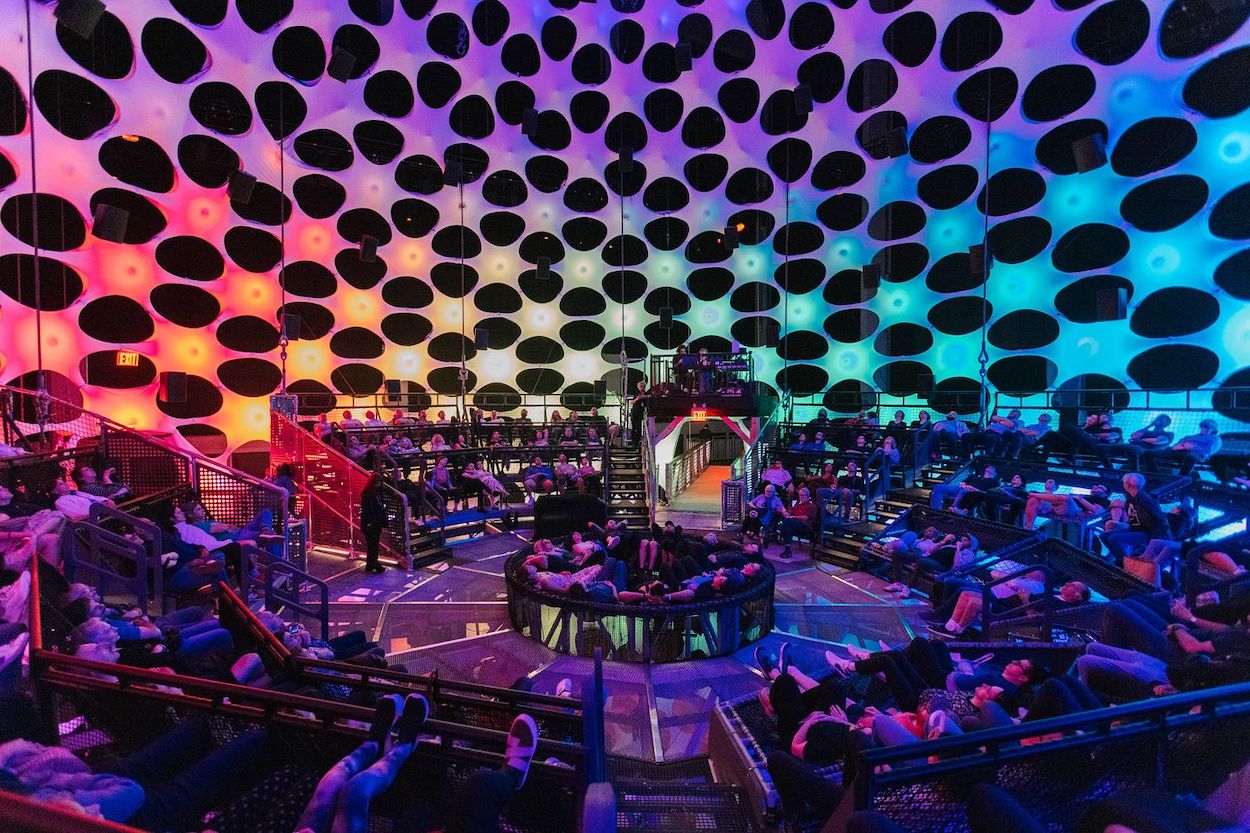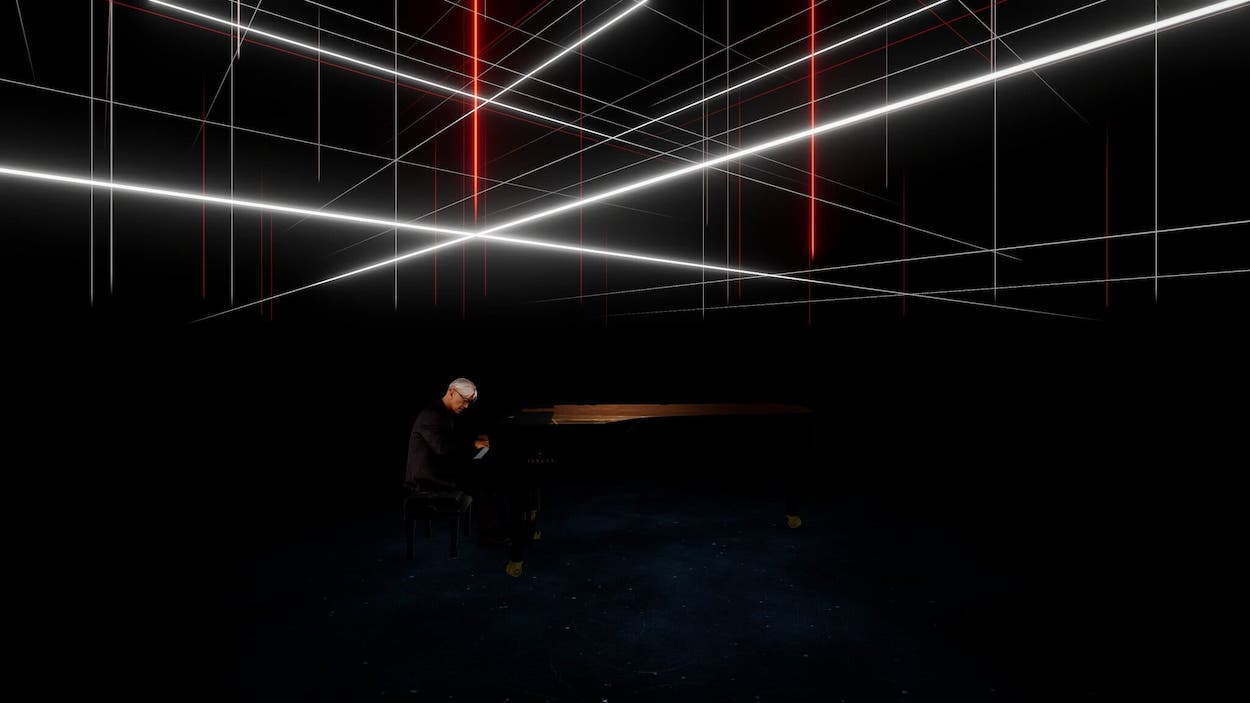At the 1970 World Exposition in Osaka, the radical German composer Karlheinz Stockhausen revealed one of his most perplexing works. (No small feat for an artist who once sent musicians in helicopters to play airborne string quartets.) Billed as the world’s first spherical concert hall, the Kugelauditorium enticed one million visitors with compositions specially adapted for the space that promised to move sound above, below, and through their bodies. It never quite took off during Stockhausen’s lifetime, but thanks to a team led by Ed Cooke, the concept—newly billed as the Sonic Sphere—is living on through pop-ups in France, Mexico, and at Burning Man. Now, a giant 65-foot iteration is suspended inside The Shed’s soaring McCourt space through the end of July.
Sonic Sphere promises a novel auditory experience, hosting listening sessions of music—the xx’s debut record, playlists by Yaeji and Carl Craig—remixed for its spherical build. Visitors enter via a raised platform and totter around on vertigo-inducing mesh until they recline on netting beds and luxuriate in the sounds emanating from 124 meticulously arranged speakers, complete with flashing lights. Early reviews range from “sublime” to “overwhelming,” with a child even saying the experience felt akin to entering an “alien mothership.” The pod’s metal framework has also drawn comparisons to the Death Star—and perhaps unfortunately, a Wiffle ball. Justin Davidson, writing for Curbed, questions what new modes of thought and action this iteration of Sonic Sphere is equipped to plumb. (“It strikes me as an orb in search of a point.”)



